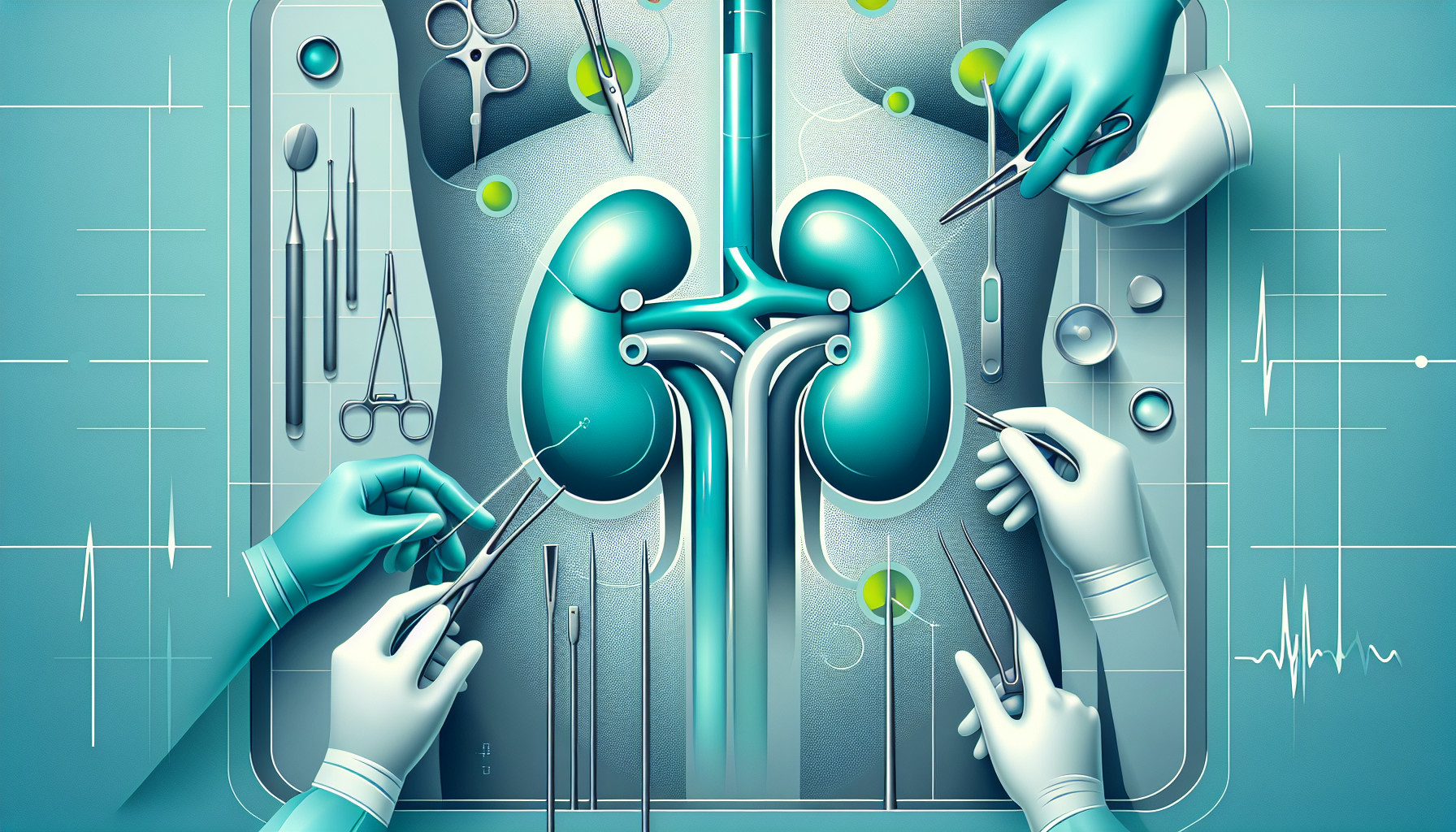Our Summary
This research paper reviews and compares the outcomes of both traditional open kidney transplant surgeries (OKT) and robot-assisted kidney transplant surgeries (RAKT). After examining eleven different studies, which included a total of 482 RAKT procedures and 1316 OKT procedures, the researchers found that RAKT was associated with lower risks of infection and complications, less postoperative pain, smaller incisions, and shorter hospital stays compared to OKT. However, they found no differences in kidney function, transplant survival, and patient survival between the two methods. The conclusion is that RAKT is a safe and feasible alternative to OKT, with less surgical complications, but doesn’t compromise the effectiveness of the transplant or the patient’s survival.
FAQs
- What are the key differences between robot-assisted kidney transplant surgeries (RAKT) and traditional open kidney transplant surgeries (OKT)?
- What advantages does RAKT have over OKT according to the research?
- Does the use of RAKT impact the effectiveness of the kidney transplant or the patient’s survival rate compared to OKT?
Doctor’s Tip
A doctor might tell a patient that robot-assisted kidney transplant surgery has been shown to have lower risks of infection and complications, less postoperative pain, smaller incisions, and shorter hospital stays compared to traditional open kidney transplant surgery. This can provide reassurance to the patient about the benefits of opting for robot-assisted surgery.
Suitable For
Patients who are typically recommended for kidney transplant are those with end-stage renal disease, which may be caused by conditions such as diabetes, high blood pressure, glomerulonephritis, or polycystic kidney disease. Patients who are on dialysis for an extended period of time, have a decreased quality of life due to their kidney disease, and have no contraindications for surgery are also considered good candidates for kidney transplant. Additionally, patients who have a suitable living donor or are willing to be placed on the deceased donor waiting list may be recommended for kidney transplant.
Timeline
Before kidney transplant:
- Patient is diagnosed with end-stage renal disease and is evaluated by a transplant team to determine eligibility for a transplant.
- Patient undergoes extensive medical tests and evaluations to assess overall health and compatibility for a transplant.
- Patient is placed on a waiting list for a deceased donor kidney or identifies a living donor for a kidney transplant.
- Patient undergoes pre-transplant preparations, including dialysis, medications, and lifestyle changes to optimize health for surgery.
- Surgery date is scheduled, and patient undergoes pre-operative counseling and education about the transplant procedure.
After kidney transplant:
- Patient undergoes the kidney transplant surgery, either through traditional open surgery or robot-assisted surgery.
- Patient is closely monitored in the hospital for complications and recovery.
- Patient begins taking immunosuppressive medications to prevent rejection of the transplanted kidney.
- Patient undergoes frequent follow-up appointments and tests to monitor kidney function and overall health.
- Patient makes lifestyle changes to maintain kidney health, including diet modifications, exercise, and avoiding certain medications.
- Patient may experience complications or rejection episodes, which require prompt medical attention and adjustments to treatment.
- Patient experiences improved quality of life, with reduced dependence on dialysis and improved kidney function.
- Patient continues long-term follow-up care to ensure the success and longevity of the transplanted kidney.
What to Ask Your Doctor
- What are the risks and benefits of undergoing a kidney transplant surgery, either traditional open surgery or robot-assisted surgery?
- How long is the recovery period after a kidney transplant surgery, and what can I expect in terms of pain and discomfort?
- What is the success rate of kidney transplants, and what factors may affect the success of the transplant?
- What is the difference in outcomes between traditional open kidney transplant surgery and robot-assisted kidney transplant surgery?
- How long will I need to take immunosuppressant medications after the transplant, and what are the potential side effects of these medications?
- What is the process for finding a suitable kidney donor, and what are the criteria for matching donors and recipients?
- What lifestyle changes will I need to make after a kidney transplant surgery, such as diet and exercise?
- How often will I need to follow up with my healthcare team after the transplant, and what kind of monitoring will be required?
- What are the potential complications or risks associated with kidney transplant surgery, and how are these managed?
- Are there any alternative treatment options to kidney transplant surgery that I should consider?
Reference
Authors: Slagter JS, Outmani L, Tran KTCK, Ijzermans JNM, Minnee RC. Journal: Int J Surg. 2022 Mar;99:106264. doi: 10.1016/j.ijsu.2022.106264. Epub 2022 Feb 17. PMID: 35183735
